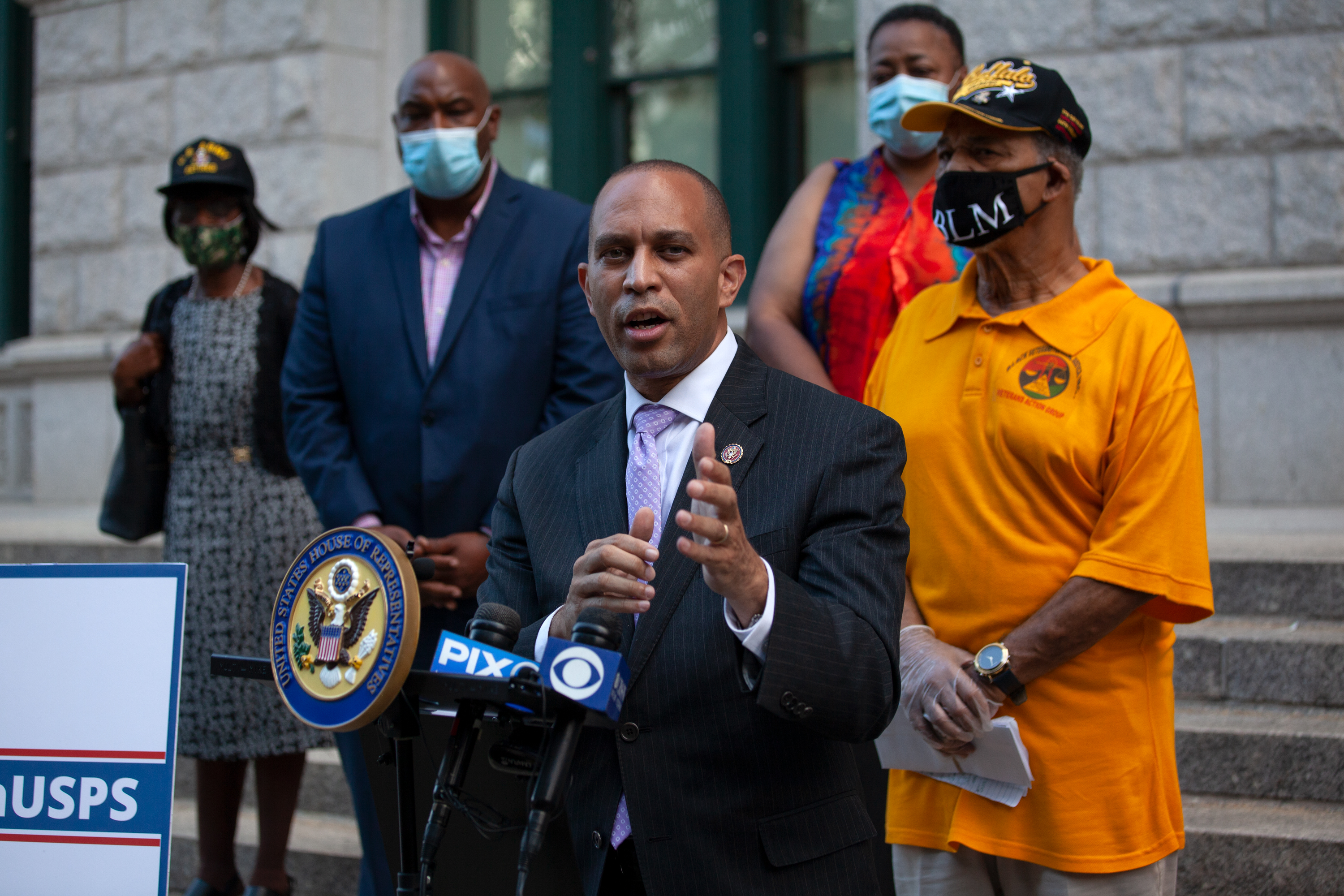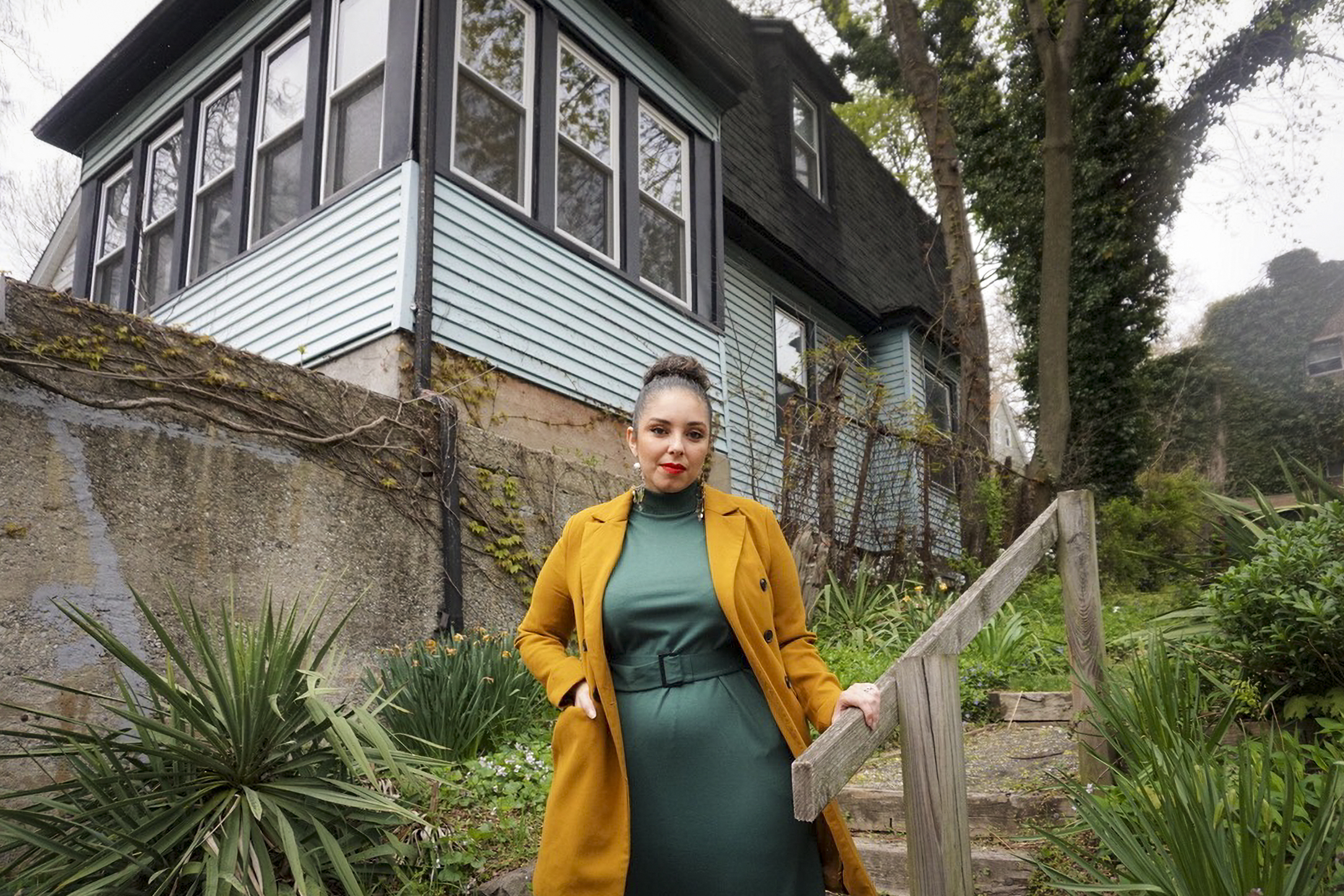This story was originally published on Thursday, Sept. 15 by THE CITY. Sign up here to get the latest stories from THE CITY delivered to you each morning.
New York’s crucial once-in-a-decade redrawing of congressional and state legislative boundaries got off to a tumultuous start Wednesday as the so-called independent redistricting commission deadlocked along partisan lines.
The stakes are high for New York and beyond with midterm elections coming up next year as Republicans and Democrats across the country battle for control of the House of Representatives. The state is losing one House seat based on 2020 Census results, intensifying the fight to carve up dwindling territory — including within the five boroughs.
The constitutional amendment approved by New York State voters in 2014 aimed at removing lopsided politics from the mapmaking process proved a flop Wednesday as the 10-member panel unveiled dueling maps — one set crafted by the Republican appointees to the commission and another by the Democratic picks.
Jack Martins, the commission’s vice chair and a former Republican state senator from Long Island, said negotiations on reconciling the pair of maps submitted privately Friday fell apart over the weekend.
“I’m going to go ahead and support putting forward two maps because we don’t really have a choice at this point, but I think it should not be a precedent,” said commissioner Charles Nesbitt, a former Republican minority leader in the state Assembly.
He added: “I believe that a fair reading of the constitution does not contemplate this process that we are about to go forward on, so let’s do better.”
The competing maps containing the new boundaries offer very different first drafts. The lines are expected to change drastically over the coming weeks as a series of public hearings are held around the state to get voter input before presenting an official proposal to the Legislature for approval in January.
But the early partisan gridlock doesn’t bode well for the commission or the mapmaking process, which could revert back to state lawmakers if the panel presents the overwhelmingly Democratic Legislature with district boundaries the politicians reject.
Murad Awawdeh, the executive director of the New York Immigration Coalition, called the commission’s failure to present a unified map “a slap in the face. ”
“This commission was created to put politics aside and build the fairest maps possible. That this commission could not even come to a consensus on the first draft of its maps leaves us with deep concerns about its ability to draw fair maps and ensure fair representation,” he said in a statement.
Congress in the Balance
There’s a lot riding on the redistricting of New York.
With the midterm elections for the House of Representatives looming and Democrats holding a slim majority, New York could play a pivotal role in keeping President Joe Biden’s party in control of the chamber if congressional boundaries are redrawn to eliminate some GOP-held seats.
New York is slated to lose a seat in the House next year, bringing down a delegation that includes the likes Reps. Alexandria Ocasio-Cortez, Hakeem Jeffries and Adriano Espaillat to 26, following the decennial census count.
 Ben Fractenberg/THE CITY
Ben Fractenberg/THE CITYBoth the Republican and Democratic appointees eliminated a congressional district upstate — offering decidedly different, party-friendly proposals.
Republicans called for carving up a Hudson Valley district currently held by Democratic Rep. Antonio Delgado and folding it into surrounding districts. Meanwhile, Democrats got rid of the seat held by retiring Republican Rep. Tom Reed that extends along the Pennsylvania border and into the Finger Lakes region.
The Republican-backed proposal aimed to retain control of seats upstate, where population growth lagged behind the rest of New York. The GOP appointees also lumped together portions of the five boroughs with neighboring suburban areas to dilute Democratic strongholds.
Under the proposed map by Democrats, New York City would be represented by 14 members of Congress. Republicans kept the current 13-member delegation, some of whom would also represent portions of surrounding suburbs.
 Ben Fractenberg/THE CITY
Ben Fractenberg/THE CITYThe Democrat-backed map extends the Long Island district currently served by Rep. Kathleen Rice towards Bayside and Fresh Meadows.
Meanwhile, the Republican-supported draft carves up Rice’s Nassau County territory to create two districts.
One extends from Jamaica and snakes along the South Shore of Long Island to Jones Beach. The other captures Kennedy Airport and the Rockaways, along with some neighborhoods with substantial Jewish populations — including the Five Towns, Coney Island, Brighton Beach, Manhattan Beach and Borough Park.
Staten Island Holds
New York City’s lone Republican stronghold, a district that includes all of Staten Island and a sliver of southern Brooklyn, would largely remain in place under either partisan proposal.
That dashed some local progressives’ hopes of combining the most conservative borough’s lone seat with part of Lower Manhattan or some Democratic Brooklyn neighborhoods. But that’s subject to change once the commission gets input from the public and presents its first official map to state lawmakers in January.
 Congresswoman Nicole Malliotakis/Facebook
Congresswoman Nicole Malliotakis/FacebookEither way, Rep. Nicole Malliotakis (R- Staten Island, Brooklyn) feels safe at the moment.
“This is the first step in a longer process and regardless of what the final configuration of the district is I’m extremely confident I will be reelected next year,” said Malliotakis, who beat freshmen Democratic Rep. Max Rose last year.
 Clifford Michel/THE CITY
Clifford Michel/THE CITYBrittany Ramos DeBarros, a Democratic Socialists of America member who is challenging Malliotakis, saw hope in both sets of proposed lines.
“We are confident that we will win even if the district lines remain unchanged, and we know there is no realistic scenario where the district will become less favorable for us,” she said.
‘Plans are Imperfect’
Commissioners said that they only had a month to work with the raw census data. Nesbitt blamed a breakneck pace and an initial lack of funding. At last week’s meeting, Martins complained that state agencies weren’t providing enough logistical support.
“I will be the first to say that these plans are imperfect and that based on public input, they can, should, and will change,” said Commission Chair David Imamura, a Democrat appointed by Senate Majority Leader Andrea Stewart-Cousins.
Still, signs of deep division emerged at Wednesday’s public hearing.
Several commissioners appointed by Republicans argued that one plan was unconstitutional because the population deviation was too significant. Two Republican-appointed commissioners referred to themselves and Democratic appointees as having a seperate “caucus.”
Adding to the pressure is a potentially changing timeline that would speed up the commission’s work.
In November, voters will be asked to approve a constitutional amendment that would move up the deadlines for the redistricting commission, among other things.
The commission has two opportunities to present maps to the Legislature in early 2022.
The amendment would require the commission to submit its first set of plans to the Legislature by Jan. 1, 2022, instead of Jan. 15, and require a second plan if necessary to be sent to lawmakers by Jan. 15 instead of late February.
State lawmakers would have to accept the new lines as they are, or vote them down.
If they reject the second proposal, then lawmakers would take over the map-making process — starting it anew weeks before elected officials kick off campaigning for office.
State Lines Also in Play
The Democratic and Republican leaders of the Legislature appointed two commissioners apiece, who in turn appointed two people not registered with either party to round out the 10-member commission.
Rules governing who can serve on the panel exclude lobbyists, recent former lawmakers, and the spouses of members of Congress, the Legislature or elected officials holding statewide office.
The commission includes two professors, three lawyers, a veteran state employee and four former state legislators.
The panelists are also tackling district lines for the state Senate and Assembly. Both Assembly and Senate Democrats enjoy a supermajority and are unlikely to be affected in any major way by redistricting.
Still, Democrats in the Senate are hoping to secure their gains in recent years after Republicans who controlled the chamber nearly a decade ago gerrymandered districts in the GOP’s favor.
THE CITY is an independent, nonprofit news outlet dedicated to hard-hitting reporting that serves the people of New York.



































